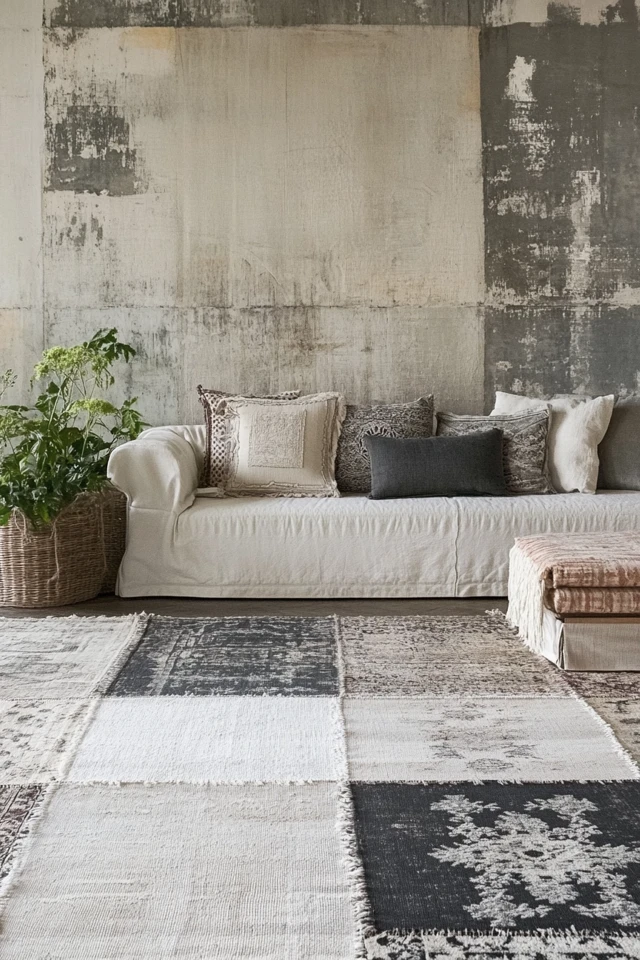Introduction
Layering rugs is a farmhouse design secret that can completely transform a space, adding texture, warmth, and visual interest. The first time I tried layering rugs was in my own living room—a neutral jute rug served as the base, and I topped it with a smaller vintage kilim rug for a pop of color and pattern. It instantly elevated the room, making it feel both cozy and stylish.
Farmhouse rugs, with their natural materials, neutral tones, and timeless patterns, are perfect for layering. Whether you’re looking to define a space, add softness to hard flooring, or experiment with textures, learning the art of rug layering will help you achieve a polished farmhouse look. In this guide, I’ll share everything you need to know to layer rugs like a pro, along with practical tips for every room in your home.
Why Layering Rugs Works in Farmhouse Design
The Benefits
- Adds Depth: Layered rugs create a rich, multi-dimensional look.
- Softens Spaces: Extra layers make rooms feel cozier and more inviting.
- Defines Areas: Perfect for open floor plans or multi-functional spaces.
- Showcases Style: Combine patterns and textures to express your personality.
Farmhouse Appeal
- Neutral tones and natural fibers make layering rugs a seamless fit for the rustic, grounded charm of farmhouse decor.
Step 1: Start With a Base Rug
Why It’s Important
The base rug sets the foundation for your layered look, so choose one that complements your room and style.
Ideal Base Rugs for Farmhouse Style
- Jute or Sisal Rugs: Natural and neutral, perfect for farmhouse spaces.
- Flatwoven Rugs: Durable and simple, providing a clean canvas.
- Neutral Area Rugs: Go for solid colors or subtle patterns like stripes.
Step 2: Choose a Top Rug
Why It’s Important
The top rug adds color, texture, and personality to your design.
What to Look For
- Smaller Size: The top rug should be smaller than the base rug to create contrast.
- Farmhouse Patterns: Opt for vintage-inspired designs, plaid, stripes, or muted florals.
- Soft Materials: Consider wool or cotton for a cozy touch.
Step 3: Play With Texture
Why It’s Important
Mixing textures adds depth and keeps the layered look interesting.
How to Do It
- Pair a coarse jute rug with a soft wool or cotton rug on top.
- Combine a flatwoven base rug with a plush shag or faux fur top rug.
- Use fringe or braided edges on one rug for added texture.
Step 4: Experiment With Patterns
Why It’s Important
Layering patterns can create a dynamic, eye-catching look.
Tips for Success
- Stick to a cohesive color palette to keep patterns from clashing.
- Mix a bold patterned top rug with a subtle or solid base rug.
- Pair geometric designs with organic, vintage-inspired patterns.
Step 5: Focus on Placement
Why It’s Important
Proper placement ensures your layered rugs look intentional and balanced.
Tips for Every Room
- Living Room: Place the base rug under the front legs of furniture and center the top rug in the seating area.
- Dining Room: Use a large base rug under the table and a smaller rug at the head or sides for contrast.
- Bedroom: Layer rugs at the foot of the bed or under the bed, allowing both rugs to peek out.
- Entryway: Use a durable base rug and a smaller decorative rug for a welcoming first impression.
Step 6: Use Rug Pads for Stability
Why It’s Important
Rug pads prevent slipping and keep your layered rugs looking neat.
What to Do
- Place a non-slip pad under the base rug for stability.
- Use a thinner pad under the top rug to keep it in place without adding bulk.
Step 7: Customize for Seasonal Decor
Why It’s Fun
Switching out rugs with the seasons keeps your space feeling fresh and festive.
Ideas to Try
- Spring: Use floral or pastel rugs for a light, airy feel.
- Summer: Pair breezy jute rugs with nautical stripes or bold patterns.
- Fall: Add warm-toned rugs with plaid or earthy patterns.
- Winter: Layer cozy faux fur or thick wool rugs for extra warmth.
Picture Gallery
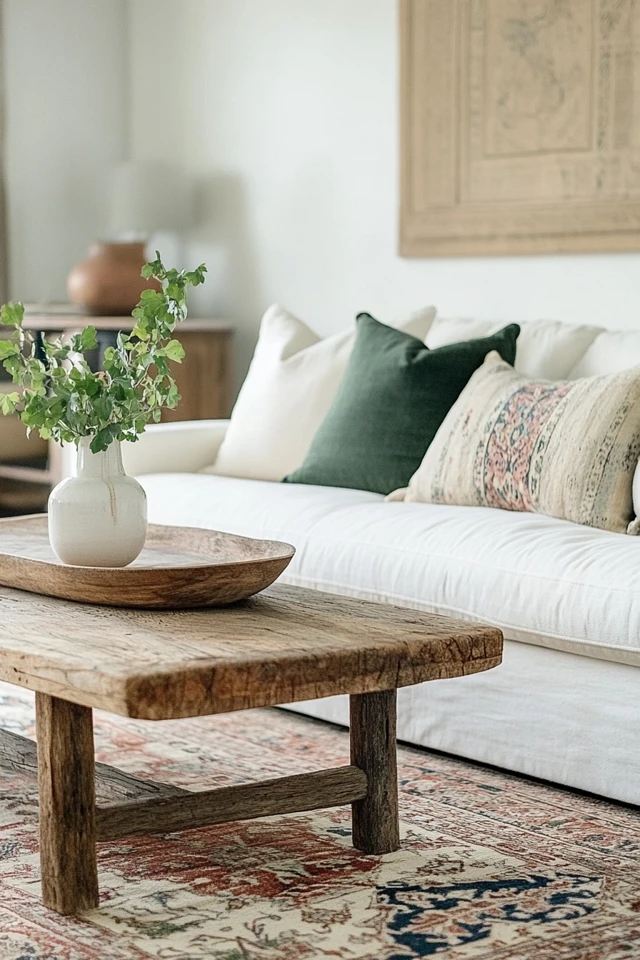
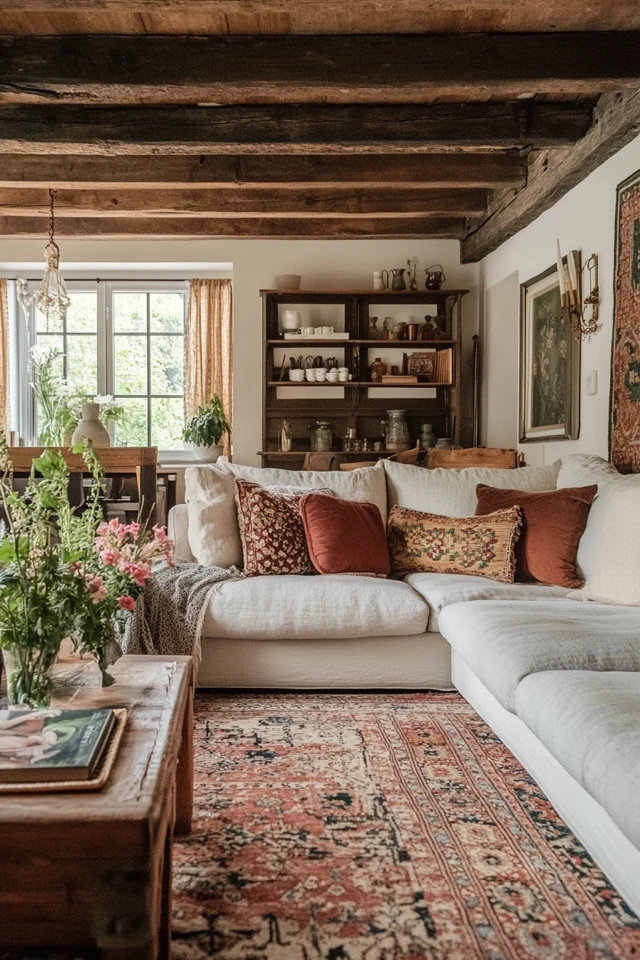
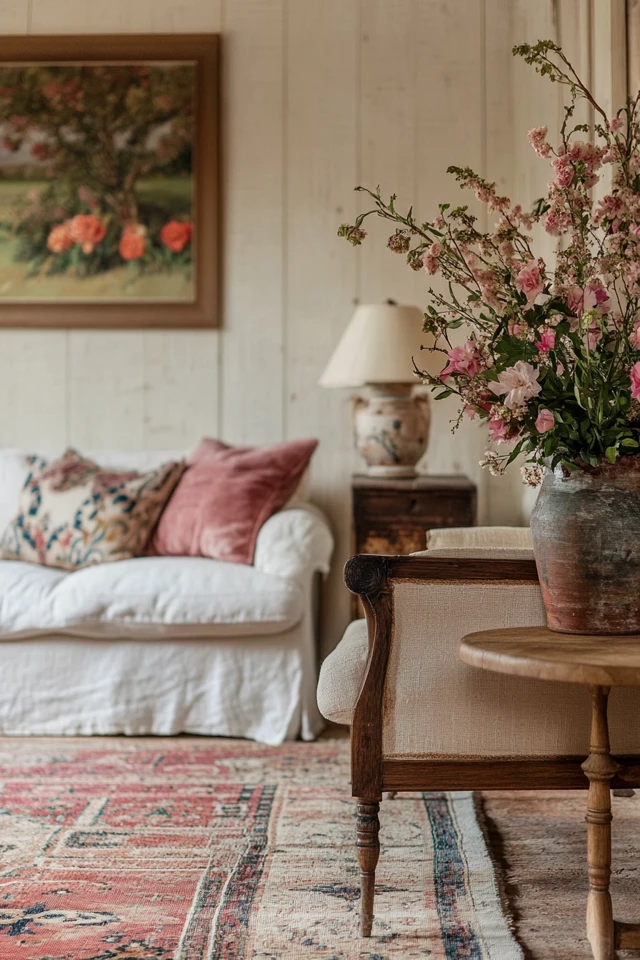
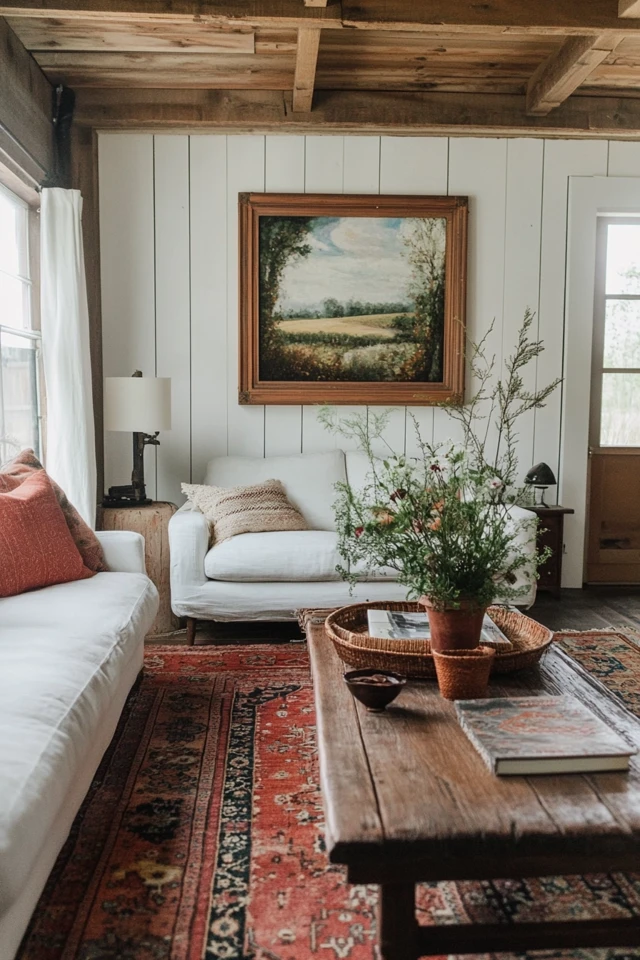
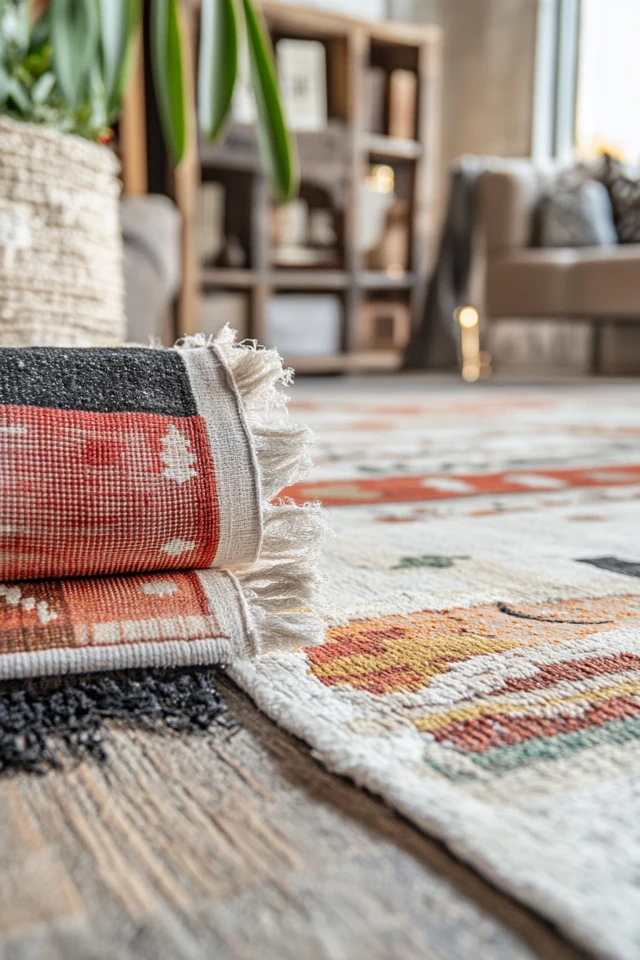
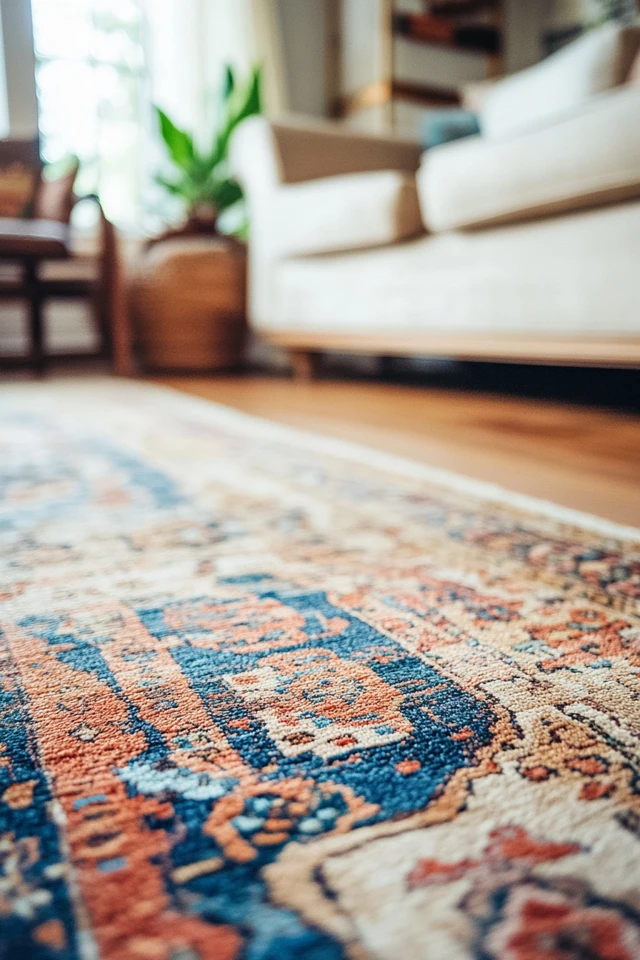
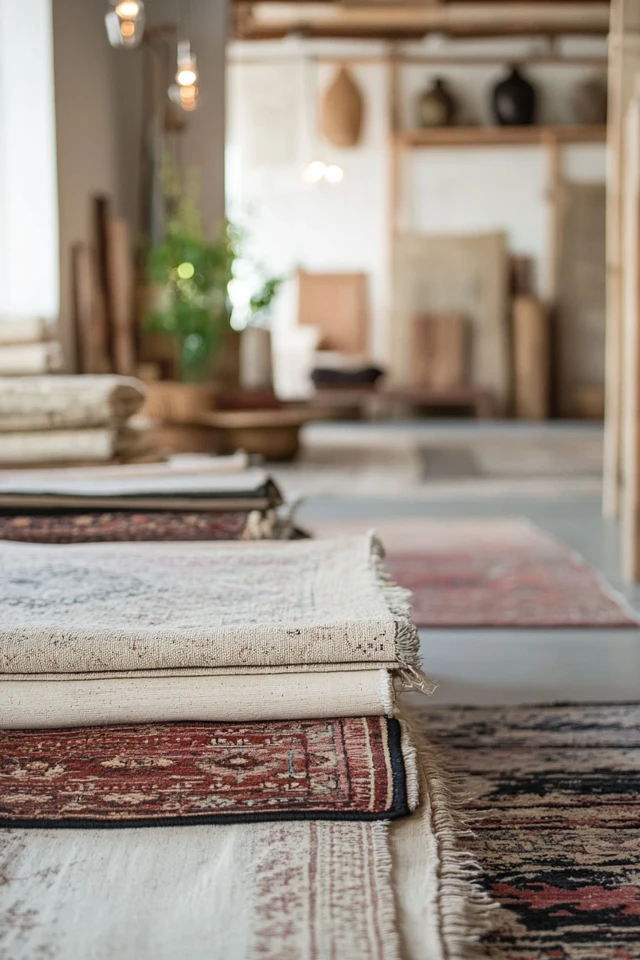
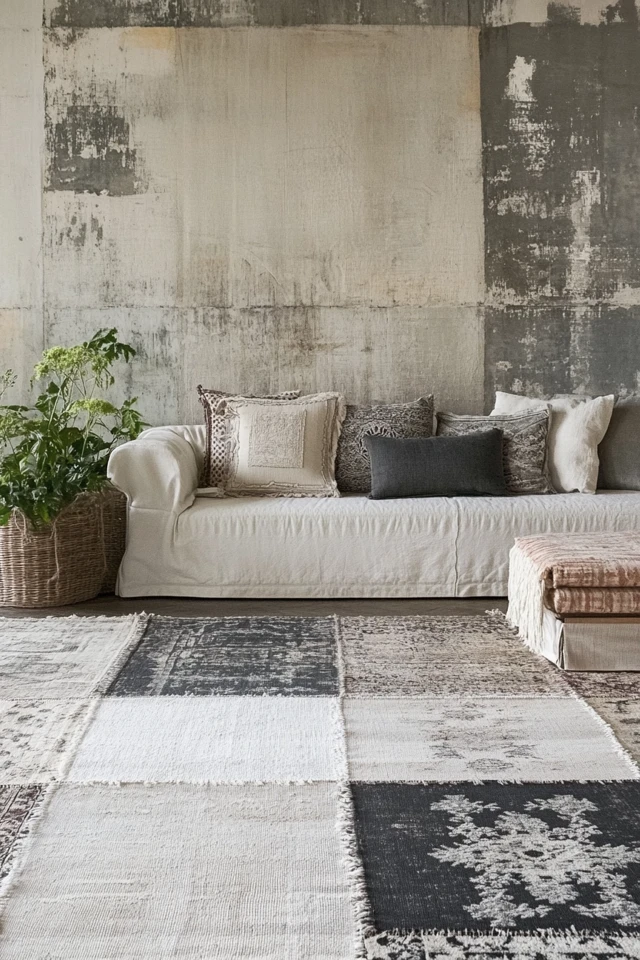
Conclusion
The art of layering farmhouse rugs lies in finding the right balance of textures, patterns, and placement to create a look that feels cohesive and inviting. With the right base rug, a thoughtfully chosen top rug, and a little creativity, you can transform any room into a warm and stylish retreat.
What I love most about layering rugs is how versatile it is. Whether you’re decorating a large living room or a small entryway, this technique works in every space and for every season. Start with a jute base, experiment with vintage-inspired patterns, and have fun creating a farmhouse look that’s uniquely yours.
FAQ
Can I layer rugs in a small room?
Yes! Use smaller rugs and stick to light, neutral tones to avoid overwhelming the space.
Do I need to match the rugs exactly?
No! Mixing textures and patterns adds interest. Just make sure the colors complement each other.
What’s the best way to clean layered rugs?
Vacuum regularly and clean spills immediately. For the top rug, consider removing it for a deeper clean as needed.
Can I layer rugs on carpet?
Absolutely! Use a flatwoven or low-pile base rug on the carpet, and layer a patterned or textured rug on top.
How do I keep layered rugs from shifting?
Use rug pads under both the base and top rugs for added stability and to prevent slipping.

